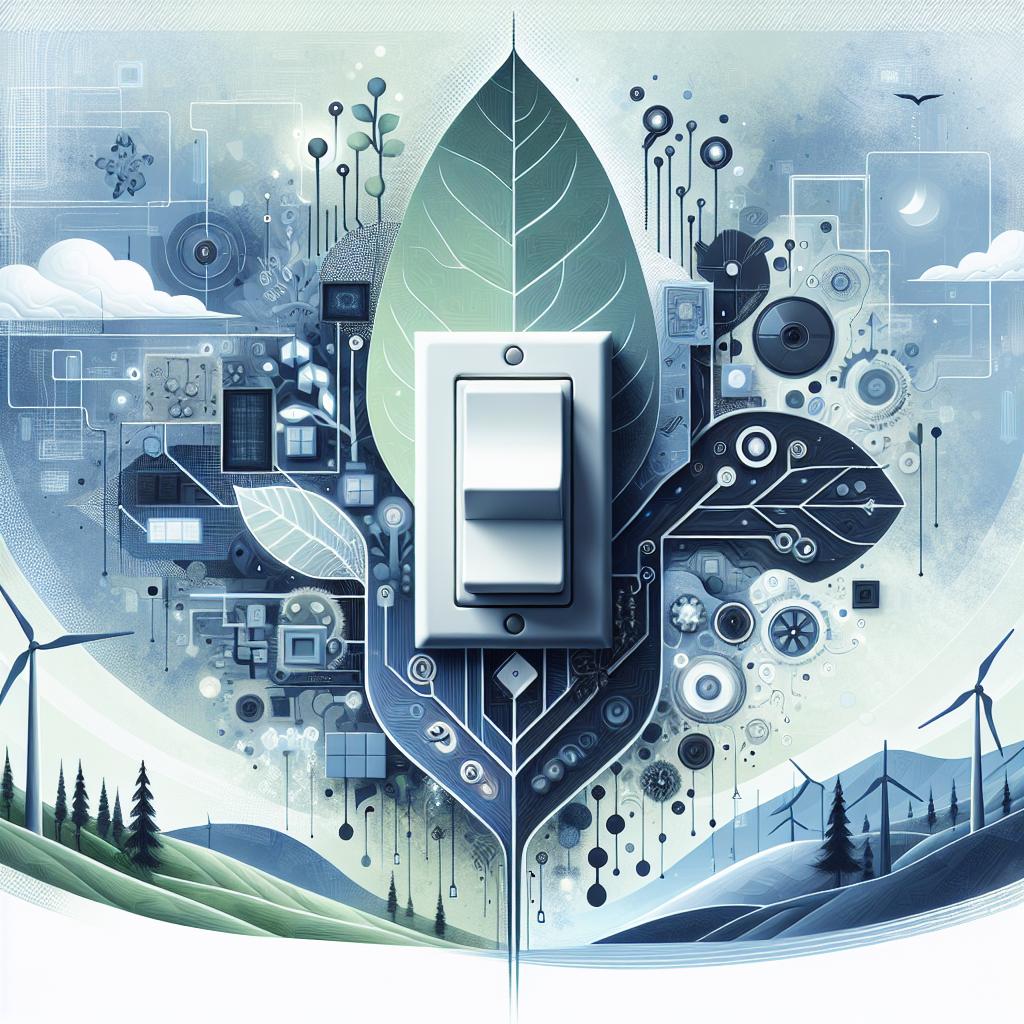Introduction:
In the dance of climate control, your HVAC system plays a pivotal role, orchestrating the perfect harmony between comfort and energy efficiency. However, there may come a time when you need to take a pause—whether for maintenance, repairs, or simply to save energy during prolonged absences. Turning off the power to your HVAC unit might seem daunting, but with the right guidance, it becomes a straightforward task. In this article, we will explore the essential steps to safely cut power to your HVAC system, ensuring that you can take control of your indoor environment with confidence. Whether you’re a seasoned DIY enthusiast or a cautious homeowner, understanding how to manage your HVAC power can empower you to maintain your system effectively and responsibly. Join us as we demystify the process and help you navigate the path to a more energy-conscious lifestyle.
Understanding the Importance of Safely Shutting Off Your HVAC System
Shutting off your HVAC system correctly is vital for several reasons. Firstly, it protects your system from damage. Whether you’re conducting repairs, servicing the unit, or preparing for a seasonal change, ensuring the power is completely off prevents any accidental start-ups, which could lead to injuries or worse, further damage to your equipment. It’s essential to follow proper procedures to avoid electrical shocks or system malfunctions that can disrupt your home’s comfort.
Secondly, safely powering down your HVAC helps to maintain energy efficiency. An unintentional operation of the system while it’s being serviced or maintained is not only risky but can also lead to extra energy consumption and higher utility bills. By knowing how to correctly shut off power at the circuit breaker, or via the emergency switch, you enhance the longevity and performance of your HVAC system. Consider these simple steps to ensure your HVAC is turned off properly:
- Locate the circuit breaker for your HVAC system.
- Switch it to the OFF position.
- Confirm the power is off by checking the thermostat.
- If necessary, use the emergency shut-off switch.

Identifying the Main Power Source Behind Your HVAC Unit
To effectively turn off the power to your HVAC system, it’s crucial to first locate its primary power source. Typically, HVAC units are powered from various sources, including:
- Main electrical panel – This is often the primary source of power for your HVAC system.
- Disconnect switch – Usually found near the outdoor unit, this switch provides a convenient way to isolate the system.
- Thermostat – In some cases, the thermostat may control a separate power supply to the HVAC system.
Once you identify the correct power source, you can safely proceed with turning off the system. Here’s a quick reference table to help you pinpoint the primary power sources:
| Power Source | Description | Location |
|---|---|---|
| Main Electrical Panel | The central hub for your home’s electrical system. | Typically in the basement or garage. |
| Disconnect Switch | A safety feature to shut off power directly to the unit. | Near the outdoor unit, mounted on the wall. |
| Thermostat | Device that regulates temperature, may have power control. | Mounted on an interior wall. |

Step-by-Step Guide to Disengaging Power Without Risk
Before you start working on your HVAC system, it’s crucial to ensure your safety. First, locate the main electrical panel in your home. This is usually found in the basement, garage, or utility room. Next, identify the breaker that powers your HVAC unit. It might be labeled clearly, but if not, consult the panel diagram for guidance. To avoid accidental power restoration, it’s wise to use a piece of tape to cover the breaker switch temporarily. This simple action can help prevent someone from unknowingly turning the power back on while you’re working.
Once you have secured the circuit breaker, double-check that the power is off by using a voltage tester on the wiring connected to your HVAC system. If the tester shows no voltage, you can proceed with your work safely. In case there are any discrepancies, like a buzzing sound or flickering lights, ensure to consult a qualified electrician. Round up some essential tools like a screwdriver, pliers, and a flashlight to make the process smoother. Organizing your workspace and having everything within reach will help you to work efficiently and securely.

Troubleshooting Common Issues After Power Shutdown
After a power shutdown, you may encounter certain common issues with your HVAC system that can disrupt your indoor comfort. One of the first things to check is whether the system is responding at all. If there are no signs of life, ensure that the power is fully restored and the circuit breaker hasn’t tripped. Check for any blown fuses that may have occurred during the outage. If the HVAC unit seems to be operating, yet fails to hit the desired temperature, it may be due to the thermostat needing recalibration. Ensure it’s set to the correct mode—heating or cooling—as well as the desired temperature.
Another issue might arise from the HVAC system’s air handler or blower, which can sometimes require a reset after power interruptions. If your system is not blowing air as it should, locate the reset button on your air handler and press it. Additionally, inspect the air filters; a clogged filter can hinder airflow and efficiency. Maintaining clean filters will not only enhance performance but also prolong the lifespan of your HVAC unit. If problems persist, consider contacting a professional technician to ensure there are no underlying electrical or mechanical malfunctions.
Q&A
Q&A: How to Safely Turn Off Power to Your HVAC System
Q1: Why would I want to turn off the power to my HVAC system?
A: There are several reasons to turn off the power to your HVAC system. You might need to perform maintenance, make repairs, clean the components, or simply want to save energy while you’re away. It’s a crucial step to ensure safety while handling electrical components.
Q2: Where can I find the power switch for my HVAC system?
A: The power switch for your HVAC system is typically located on or near the unit itself. It could also be a dedicated circuit breaker in your electrical panel. Look for a switch labeled “HVAC” or “Air Conditioner.” In some systems, you may find an emergency shut-off switch on the wall near the indoor unit.
Q3: Is it safe to turn off the power myself?
A: Yes, it is safe to turn off the power yourself, provided you follow the proper steps. Ensure you’re wearing non-conductive shoes, and avoid working in wet conditions. When in doubt, consult a professional or seek guidance before proceeding.
Q4: How do I turn off the power at the circuit breaker?
A: To turn off the power at the circuit breaker, go to your electrical panel. Locate the breaker switch that controls your HVAC system—it’s often labeled but may require a bit of searching. Flip the switch to the “Off” position. Ensure any connected appliances are also powered down to avoid overload when you turn the system back on.
Q5: What precautions should I take before turning off the power?
A: Before turning off the power, make sure the thermostat is set to off to prevent the system from trying to operate. Inform other household members of the shutdown to avoid confusion. If you’re working on outdoor units, make sure to check the weather conditions to prevent any risks associated with extreme temperatures.
Q6: Will turning off the HVAC power affect my home’s temperature?
A: Yes, turning off power to your HVAC will halt temperature regulation in your home. This can lead to uncomfortable conditions, especially in extreme weather. It’s wise to plan maintenance during milder temperatures or when you can temporarily relocate or adjust your living arrangements.
Q7: How do I know when it’s safe to restore power to the HVAC?
A: Once you’ve completed your work, ensure all panels are secured, and any tools or debris have been removed from the area. Turn the breaker back to the “On” position, and then reset your thermostat to your desired temperature. Keep an eye on the system to ensure it’s functioning properly after being powered back up.
Q8: What should I do if my HVAC system doesn’t turn back on?
A: If your HVAC system doesn’t turn back on after restoring power, check if you’ve accidentally tripped the breaker again or if any fuses need replacement. Make sure all wires and connections are secure. If the system remains unresponsive, it’s best to consult a licensed HVAC technician to diagnose the issue.
Q9: Are there any common mistakes to avoid when shutting down my system?
A: Absolutely! Common mistakes include not turning off the thermostat, neglecting to inform others in the home, and forgetting to secure the unit after maintenance. Additionally, jumping into the power-off process without understanding the system can lead to potential hazards. Always take your time and ensure you’re following the suggested steps.
Q10: Do I need to turn off my HVAC system during seasonal switchover?
A: While it’s not strictly necessary to turn off your HVAC system during seasonal transitions, it’s a good practice to do so if you’re switching between heating and cooling modes. It allows for a more thorough check-up and helps the system restart fresh, ready to tackle the changes in temperature.
—
By following these guidelines, you can safely turn off power to your HVAC system and ensure a secure and efficient environment for maintenance while protecting your home and its occupants.
Key Takeaways
turning off the power to your HVAC system may seem like a daunting task, but with the right approach and a bit of guidance, it can be accomplished safely and efficiently. Whether you’re performing routine maintenance, addressing a specific issue, or preparing for an extended absence, disconnecting power is an essential step that ensures both safety and longevity for your equipment.
Remember to always prioritize safety—double-check your workflow, and don’t hesitate to consult your system’s manual or reach out to a professional if you have any uncertainties. With this newfound knowledge, you’re empowered to take control of your HVAC system, ensuring it operates smoothly when you need it most. Now that you’re equipped with the tools and steps necessary, take a deep breath and confidently tackle this task, knowing you’re making a positive impact on your home’s comfort and efficiency.

